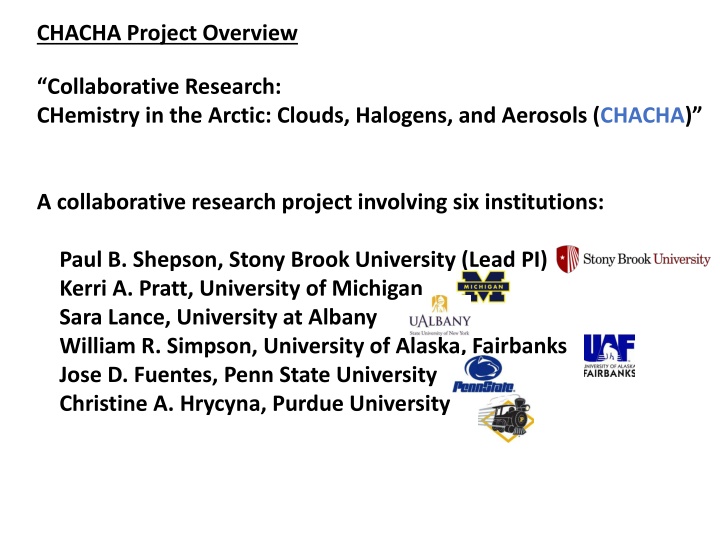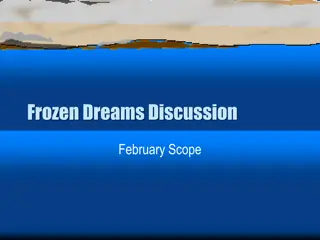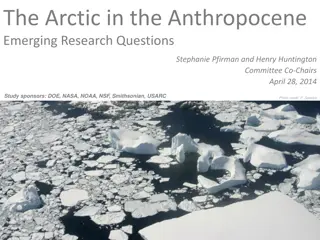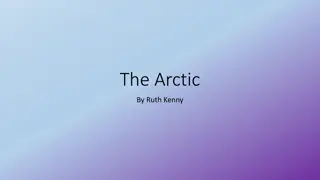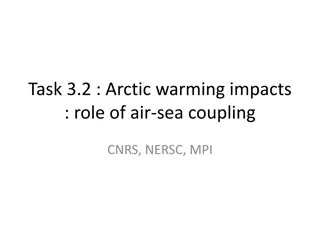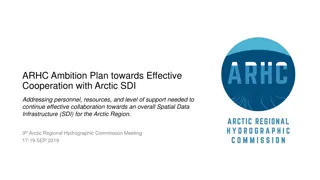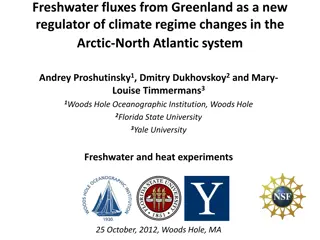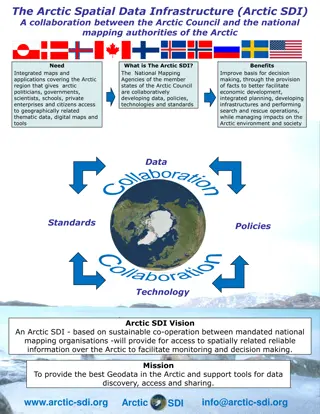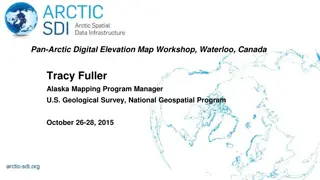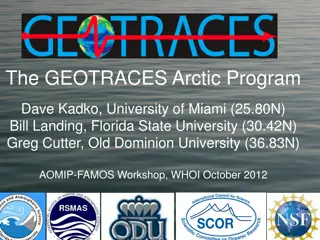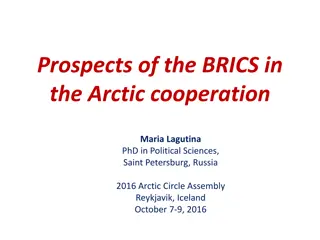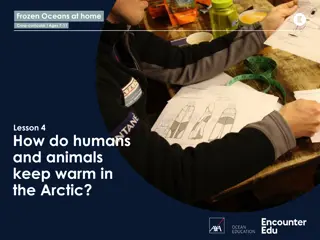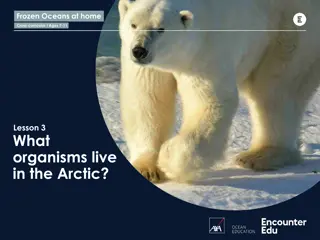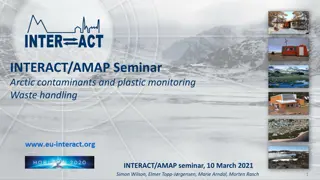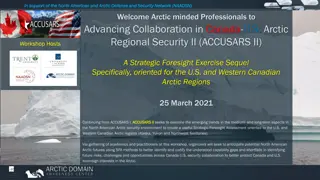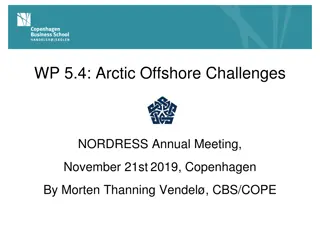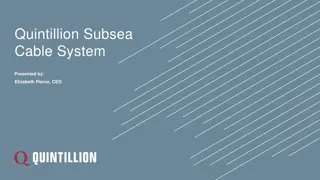Chemistry in the Arctic: CHACHA Project Overview
The CHACHA Project is a collaborative research initiative involving six institutions to study Arctic chemistry in relation to sea ice loss and fossil fuel extraction. The team aims to assess how these environmental changes impact halogen, nitrogen, and sulfur chemistry, with a focus on aerosols and clouds. The project will utilize aircraft-based observations and modeling to investigate hypotheses related to aerosol mass sources, gas emissions from oil and gas activities, and atmospheric processing of various chemical species. The research will take place in the Alaskan Arctic during spring, with a proposed timeline between February and April 2021.
Download Presentation

Please find below an Image/Link to download the presentation.
The content on the website is provided AS IS for your information and personal use only. It may not be sold, licensed, or shared on other websites without obtaining consent from the author.If you encounter any issues during the download, it is possible that the publisher has removed the file from their server.
You are allowed to download the files provided on this website for personal or commercial use, subject to the condition that they are used lawfully. All files are the property of their respective owners.
The content on the website is provided AS IS for your information and personal use only. It may not be sold, licensed, or shared on other websites without obtaining consent from the author.
E N D
Presentation Transcript
CHACHA Project Overview Collaborative Research: CHemistry in the Arctic: Clouds, Halogens, and Aerosols (CHACHA) A collaborative research project involving six institutions: Paul B. Shepson, Stony Brook University (Lead PI) Kerri A. Pratt, University of Michigan Sara Lance, University at Albany William R. Simpson, University of Alaska, Fairbanks Jose D. Fuentes, Penn State University Christine A. Hrycyna, Purdue University
CHACHA aims to assess the extent to which Arctic change, particularly sea ice loss and increased fossil fuel extraction in the New Arctic, modifies multiphase halogen, nitrogen, and sulfur chemistry, and to assess the role of aerosols and clouds in that chemistry.
The CHACHA Team proposes an aircraft-based observation and modeling approach, with aircraft payloads, flight plans, and subsequent 1-D modeling designed to test the following three project hypotheses: Hypothesis 1:Open sea ice leads are the largest source of early spring aerosol mass to the Arctic boundary layer, affecting aerosol and cloud chemical composition, ozone, and other gases. Hypothesis 2: Oil and gas extraction activities contribute to gas emissions that significantly modify natural halogen chemistry, impacting multiphase halogen recycling and activation, as well as the fate of NOx and ozone. Hypothesis 3: Atmospheric oxidative processing of sulfur, nitrogen and other chemical species differs between clear-sky conditions, and those impacted by in-cloud chemical processing.
We propose to conduct eight weeks of observations across the Alaskan Arctic during spring using two aircraft, the University of Wyoming King Air and the Purdue University Duchess (ALAR). Purdue ALAR
CHACHA is proposed to be conducted between February and April, 2021, flying between Barrow and Deadhorse airports. A simplified, conceptual flight plan (multiple plans) is shown below.
The instrumentation payload and prospective flight plans have been previously reviewed by Univ. of Wyoming staff. Broader Impacts Mentoring/Training: 2 female early-career co-PIs, 2 post-docs, 4 PhD students, 4+ undergraduate students. CHACHA Aircraft Open House: Public open houses for the North Slope Borough (Utqia vik) and Fairbanks, AK communities to visit the UWYO King Air and Purdue ALAR, meet CHACHA scientists and project engineers/staff, and learn about Arctic change North Slope Science Fair: Project team participation in science fair judging and community science lectures, facilitated by UIC-Science North Slope Borough K-12 Teacher Workshop: Collaborative workshop with K-12 educators to build new science curriculum based on Arctic snow chemistry research to address the Next Generation Science Standards, as requested by UIC-Science Additional Public Outreach: Social media of CHACHA activities; integration of CHACHA into course development; outreach for underrepresented groups near PI s home communities
